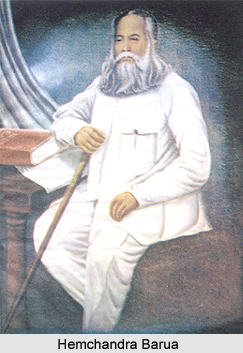 The Orunodoi was like a kind of Journal in the Assamese language which went a long way in a strengthening and further establishing the literature of the region. Seen in the early issues of the Orunodoi was this statement which sought to describe the journal. It described the Orunodoi as, "A monthly Paper, devoted to Religion, Science, and General Intelligence." The periodical proved true to what it intended to do, and the first issue was published in January 1846. It contained a review of events, national and international, of the previous year (a regular feature thereafter); an article entitled "Dharamor Katha," subtitled "Religious Intelligence," dealing with numerous converts to Christianity; and articles on the evils of opium and the tombs of the Ahom kings.
The Orunodoi was like a kind of Journal in the Assamese language which went a long way in a strengthening and further establishing the literature of the region. Seen in the early issues of the Orunodoi was this statement which sought to describe the journal. It described the Orunodoi as, "A monthly Paper, devoted to Religion, Science, and General Intelligence." The periodical proved true to what it intended to do, and the first issue was published in January 1846. It contained a review of events, national and international, of the previous year (a regular feature thereafter); an article entitled "Dharamor Katha," subtitled "Religious Intelligence," dealing with numerous converts to Christianity; and articles on the evils of opium and the tombs of the Ahom kings.
In later years, it included brief critical essays on literature and Assamese culture, folktales, and short, original poems. Though religion was an important focus of the journal, Orunodoi was never an organ for aggressive Baptist propaganda. It has been pointed out that while on the one hand the constant stream of news re-shaped the Assamese mind, it also served to glorify colonialism as beneficial. Nevertheless, it brought to Assam a greater awareness of the world beyond and provided a forum for early Assamese writers of the nineteenth century. Assamese literature during this period and the Jonaki era must be discussed through the contributions of particular writers, rather than the development of genres. Among these was a trio who defined Assamese literature of the mid-nineteenth century- Anandaram Dhekiyal Phookan, Hemchandra Barua, and Gunabhiram Barua.
Literary genres such as poetry and drama had to be re-established, and those such as the novel and short story had to be introduced before genre-specific traditions could be generated. Furthermore, lacking a continuous tradition, Assamese literature had to take a big leap to adopt modern trends. One particular trend that this era established was the use of the colloquial in prose, as opposed to the rhythmic speech patterns established by devotional literature.
The Orunodoi served a rather important purpose. On the one hand, it was through the Orunodoi and the letters, petitions, and scholarly works that the missionaries sought to establish Assamese as the official language of Assam. This was a major event as with the advent of the British in Assam, Bengali language had been declared as the official language for official and administrative purposes, thus relegating Assamese and all the major academic and literary works to the background. Furthermore, according to Maheswar Neog, the Orunodoi helped in "culturing the language along modern lines, endowing it with a grammar, a dictionary and a large mass of writings in modern prose".



















